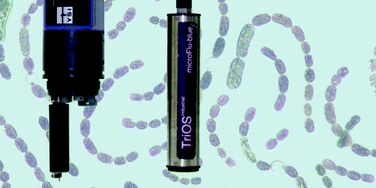Performance evaluation of phycocyanin probes for the monitoring of cyanobacteria
Abstract
The performance of two field probes (YSI 6600 and TriOS), used for the measurement of in vivophycocyanin fluorescence, was compared and validated in the laboratory in 2008 and 2009 with cultures of Microcystis aeruginosa and field samples. The background noise of the two probes was low and the detection limits were estimated at 1500 cells mL−1 for the YSI and 0.69 µg PC L−1 for the TriOS. The linearity and repeatability of both probes have been excellent. Strong relationships were observed between the in vivo fluorescence and the total cyanobacterial biovolume (R2 = 0.82 YSI; 0.83 TriOS) or the abundance (R2 = 0.71 YSI; 0.75 TriOS) of cyanobacteria. However, the difference between cell densities determined by


 Please wait while we load your content...
Please wait while we load your content...